
Everest base camp trek in May
Everest base camp trek is one of the most popular trekking in Nepal. Every year more than thousands of people enter Nepal to trek Everest base camp. One of the reason, why this trek is so popular is that it provide trekkers with the most unique & memorable experience. This trekking has been popular among travellers & trekkers ever since Sir Edmund Hilary & Tenzin Norgay Sherpa attempt the first successful summit in 1953 disclosing the same path for thousands of other travellers. The trek is famous for its majestic view of world's tallest mountain Mount Everest & World famous climbers Sherpa residing in the Everest region. Everest base camp trek is regarded to be one of the most rewarding & satisfying treks as it provides the most beautiful experience that one can get in their lifetime. • Weather condition of Nepal in May Nepal is available for trekking during all seasons of the year. There are basically four climatic seasons in Nepal. It starts to get moist during this time of the year with plenty of thunderstorms. This is also the month when the rain & storms start to show. The weather condition in May in Nepal is warmer but can be varied according to places. This month is suitable for people who want to travel in greenery. May is considered to be hot as during this period Even nighttime temperature remains high. There are chances of rain during this month but the real downpour starts in June. May has a clearer, dryer & stable days than other months of the year making it best month to travel & explore the natural scenery. May is also considered as one of the most famous & suitable month for trekking in Nepal because of it's suitable & stable weather condition. • Weather condition of Everest base camp in May weather It is considered to be one of the best time to trek to Everest base camp. May is the end of spring season just before the arrival of monsoon. Autumn season & spring season are considered to be best for trekking Also, it is said that may is the month of climbing the world tallest peak, Mount Everest. Normally, during this month the weather around Everest base camp is fantastic with a clear blue sky. May is suitable for trekking to a higher altitude with clear & dry days. Most of the Everest climber can be found on this month around Everest base camp getting ready for their summit. The temperature in May is warm in comparison to other months of the year. There is almost no snow on the way to base camp during this month. So, it can be said that the way to Everest base camp in May is clearer than other months. The skies are mostly clear and the morning and evening reward you with heart-stirring sunrise and sunsets view of the Himalayan panorama. You should definitely be considered trekking Everest base camp in may see that it is the most suitable month to trek to Everest base camp. Also, another main advantage of trekking to Everest base camp in may is that you get to meet some of the most inspiring & motivating climbers ready to reach the summit. It is for sure that your Everest base camp trek in may will be one of the most memorable experiences that you can get in your lifetime
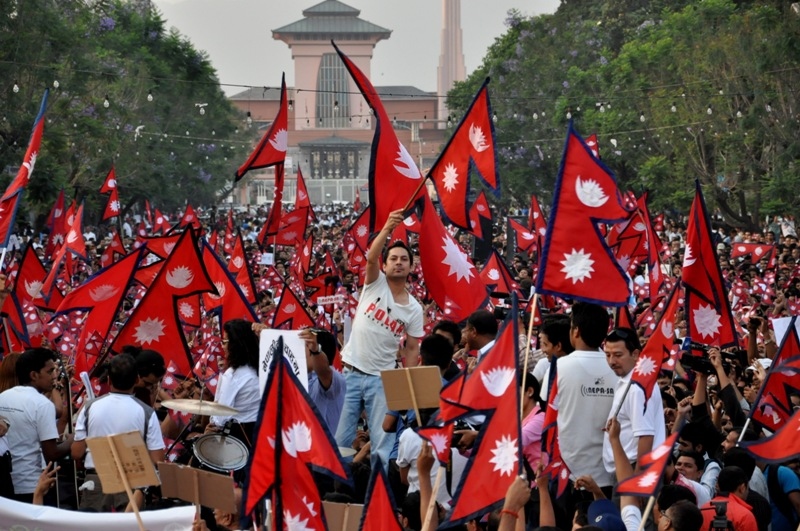
Loktantra Diwas- Democracy Day celebrated in Nepal
Loktantra Diwas or democracy day in Nepal is the day that commemorates the reinstatement of democracy in the country. Loktantra Diwas is a public holiday in Nepal celebrated by people around the nation annually on April 24. There are two days in Nepal celebrated as democracy day. One is "Prajatantra Diwas" which is celebrated on February 19 every year & another is "Loktantra Diwas". Prajatantra Diwas commemorates the dethrone of Rana dynasty whereas Loktantra Diwas marks the reinstatement of the National Parliament. Both democracy days have equal meaning to the citizens of Nepal as both of the days represents the acceptation of freedom & peace in the country. After Nepal was free from Rana dynasty, there was a hope of freedom & peace among the citizens of the nation. But again in 2005 King Gyanendra Shah took complete control of the government & Kept entire Nepal under his ruling. In 2006, it was protested by Seven Party Alliance (SPA) along with the unified communist party (Maoist) of Nepal. 13 years ago King Gyanendra's regime was brought to the end followed by a national wide mass movement outbreak known as "Janaandolan II"(Peoples movement II) where more than two dozens of freedom-fighters lost their lives & thousands were injured. Then, on April 24 King called the Seven Party Alliance(SPA) & officially reelected the house of representatives. King passed on the authority to SPA to ensure the peace, prosperity & national unity of the nation. The Seven Party Alliance(SPA) accepted the reinstitution & declared Girija Prasad Koirala as the leader of the new government. Since then, the government started giving public holiday on April 24 marking the historic day of Nepal. Tomorrow it will be the 13th Democracy day celebrated by people around the nation. On the day of Prajatantra Diwas, various programmes are organized by different political parties & other civil society organization in Kathmandu & other parts of the country. We can see people in their traditional dresses taking part in the celebration of Loktantra Diwas. Loktantra Diwas is one of the important days in the history of Nepal which should be respected & celebrated by every citizen of Nepal. The government has been giving public holiday on the day of Loktantra Diwas until last year but it was announced that there won't be any holiday tomorrow in order to decrease the number of public holidays in Nepal.

First Paraplegic to reach Everest base camp in wheelchair
Australian Scott Doolan has become the first paraplegic to reach Everest base camp in a wheelchair. He has become the first paraplegic to reach the world's highest peak. Doolan reached the feet of world's highest peak on Tuesday after an unimaginable 10-day journey. Everest base camp 5,364 m above sea level is only accessible on foot or by helicopter. Scott Doolan, 28, set out on Friday for Everest base camp & proved it that Everest base camp is also accessible to wheelchair users. Before setting out to Everest base camp, Doolan spent his last eight months training for the trek, doing daily cardiovascular & strength training. He also spent time in Australia’s Blue Mountains to get some experience on trails, wearing a mask that limits oxygen flow in a bid to replicate the high altitude conditions that await him in the Himalayas. "I was struggling to breathe (when I reached base camp) because I was walking on my hands but I just remember looking up and seeing a crowd of about 20 people, Once I actually got there. they all start cheering and that was pretty damn humbling," he told AFP. AFP reported that on the day seven of the trek, one of Doolan's wheelchair wheel snapped off. "I was pretty devastated. I was just sitting by myself on a rock, thinking how am I going to do this now," he said. But later, his team found a way to fix the broken wheel & continued the journey. Doolan has been confined to a wheelchair since he was 17 after he got in a motorcycle accident & broke his spine. For his journey to Everest base camp, he used custom-made wheelchair "human wheelbarrow" technique - crawling his way up much of the mountain. Doolan & his team decided to go through this challenge to inspire & motivate others who have gone through the similar experience as him & raise awareness for mental health. Before his climb, Doolan said, "My first thought was no way, impossible, I can't do that. However, after thinking about it and talking it through with the team, I thought why not, what better way to challenge myself and influence others to rise above doubt than to climb the biggest mountain in the world." Doolan was airlifted from base camp on Sunday & taken to hospital in Kathmandu. It has been revealed that he had a stress fracture in his tailbone but is expected to make a full recovery.
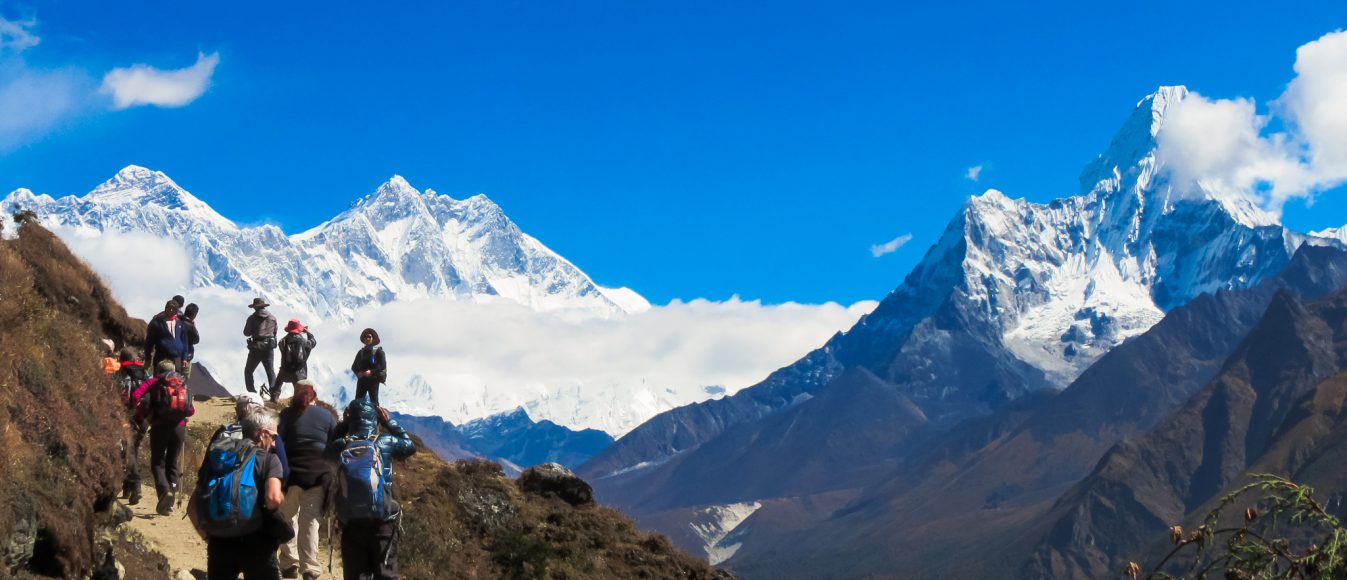
Nepal Trekking in March
Nepal Trekking in March, March is the start of spring in Nepal & spring is the time of renovation. Nepal has five seasons & March falls in right at the start of spring. In early March the flowers begin to bloom, the weather is warm & March is the ideal time for trekking in Nepal. The major Highlights of trekking in Nepal in March is beautiful blooming flower, exciting festivals, and stable weather which means during March visitors will get the most out of their visit. And another best part of trekking in Nepal in March is that it is less busy than April. Thus, you’ll find the power and beauty of the mountains more impressive & majestic. Weather in March in Nepal Spring Season or Basanta Ritu in Nepal spans into two months. From Chaitra to Baisakh (mid-March to mid-May).Like everywhere else new buds in trees & flower bloom in this season. The temperature is just right in this season neither too cold nor too hot and can get a little windy. The weather is still cold and snow may still fall early in March. The higher mountains like Everest, Annapurna, Langtang, Manaslu and Mustang may still have snow on them. While the rest will have their melting through the month. March is a dry season & has really low moisture which allows for clearer skies and lower chances of rain. In March there won't just be the best view of mountains like in January & February but also will have the better weather condition than both. Thus, the weather remains clear to give you crystal clear views of the majestic Himalayas. In March, Kathmandu experiences warm & sunny days. You can experience a good amount of sunshine about 8 to 9 hours a day. But the nights can get very chilly, so it is advisable to carry some warm clothing & arrange the heater in the hotel you are staying. As the temperature slowly increases, the duration of the day also increases. Everest base camp trek in March is the best season of the year to do Everest base camp trek. The skies are generally clear & the temperature is tolerable if not amazing. About 12 percent of the 35,000 trekkers and mountaineers who come to Everest annually, do so in March. So, it isn’t exactly crowded, but it isn’t empty either. The minimum & maximum temperature of Everest base camp at above the 4000 m is -15 & 25 degree Celsius respectively. Rhododendrons are abundant at around 2,500 m and many colourful flowers & plant begin to show up. Basically, a new cycle of life begins in March in Everest region. The Sherpas in the Everest region also prepares for a new agriculture cycle in March. This trip really has it all, high altitude trekking, spectacular views unconquerable anywhere else in the world. Annapurna base camp trek in March The Annapurna base camp is also a good option if you are looking for a destination for trekking in Nepal in March. Annapurna Base Camp Trek usually sees about 10 percent of total trekkers in March. Given that winter snow is still lying around, the Base Camp will be an awesome sight at moonlight. However, with rising temperature and winter snow still around, March is also the beginning of the peak snow slide in Annapurna Base Camp Trek. Annapurna Base Camp is also famous for its diverse species of birds and wildlife. Surrounded by the icy peaks of some of the world’s highest and most beautiful mountains, you cannot help to fall in love with this region and be blown away by its cool tranquillity.
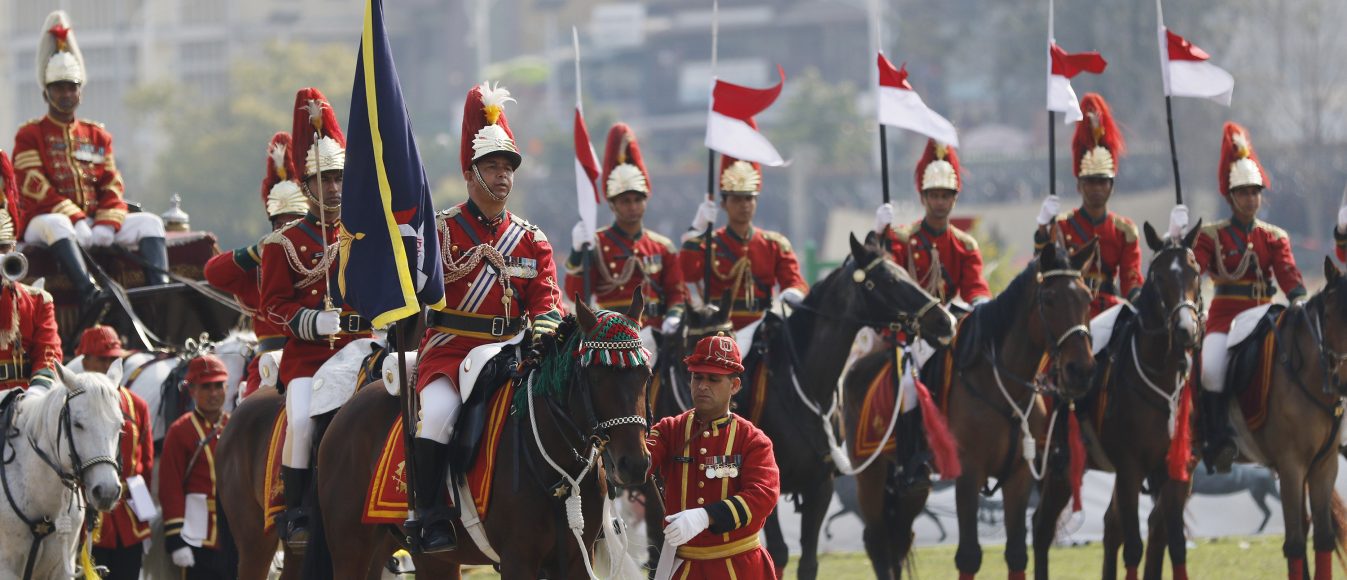
Ghode Jatra- Horse Racing Day
The traditional festival Ghode Jatra which falls in Nepali month of Chaitra (mid-march or early April) is celebrated every year in Tundikhel Kathmandu. The annual festival of Ghode Jatra is also known as Horse racing day which this year falls on March 17. The celebration of Ghode Jatra is done in a wide open ground of Tundikhel every year in the heart of Kathmandu. Organized and performed by Nepal Army and Police together, Ghode Jatra has a historically rich mythology that centers on Kathmandu city’s ancient times. Legends have it that there was a demon named 'Tundi' who had terrorized people of the valley for a long time until one day he was murdered. Finally, unable to take the reign of demon's terror anymore, the people of Kathmandu released a horde of horses on top of the demon. The horse crushed demon on the ground, and when the dust settled, the demon did not stand up like before anymore. After enduring months of the demon’s terror, the people had finally killed him but people still had a fear that demon might return again. So, to make sure that demon won't come back, a ritual came about every year of horses running on the tracks in Tundikhel. Afterwards, as time passed by, this ritual came to be known as the Ghode Jatra. To follow the same culture, Nepal army organizes horse race, cycle race & other various competition on this day. Army & policemen also perform an acrobatic show. The festival is attended by the army top brass, the top government officials and diplomats. Huge crowds gather around Tundikhel to watch but they are not allowed to enter the Tundikhel. Actually, Ghode Jatra falls within the festival of Pahachare of Newar community. Pahachare is the three-day festival of the Newar community which means inviting guests in Newari language. This festival begins every year on the Chaitra Krishna Paksha Chaturdashi (Krishna Pakshya is the second half of a lunar month). On the first day, people clean their surroundings considering it a worship of Lukumahadev. In the morning, they perform Puja and some people sacrifice animals. A feast begins at Ason where palanquins (khat) are dashed against each other beside the Annapurna temple. In the evening, idols of goddesses are taken around the city in khat. Ghode Jatra is second day. On This day palanquins are placed in Tundikhel. And intoxicated horse is also made to run in Patan. People invite their married daughters and sisters home for a grand feast on the second and third days. This is how celebration came to be. The reflection of city's past & its history is still alive & remembered as people see the celebration of Ghode Jatra in the city on no moon day of Chaitra.
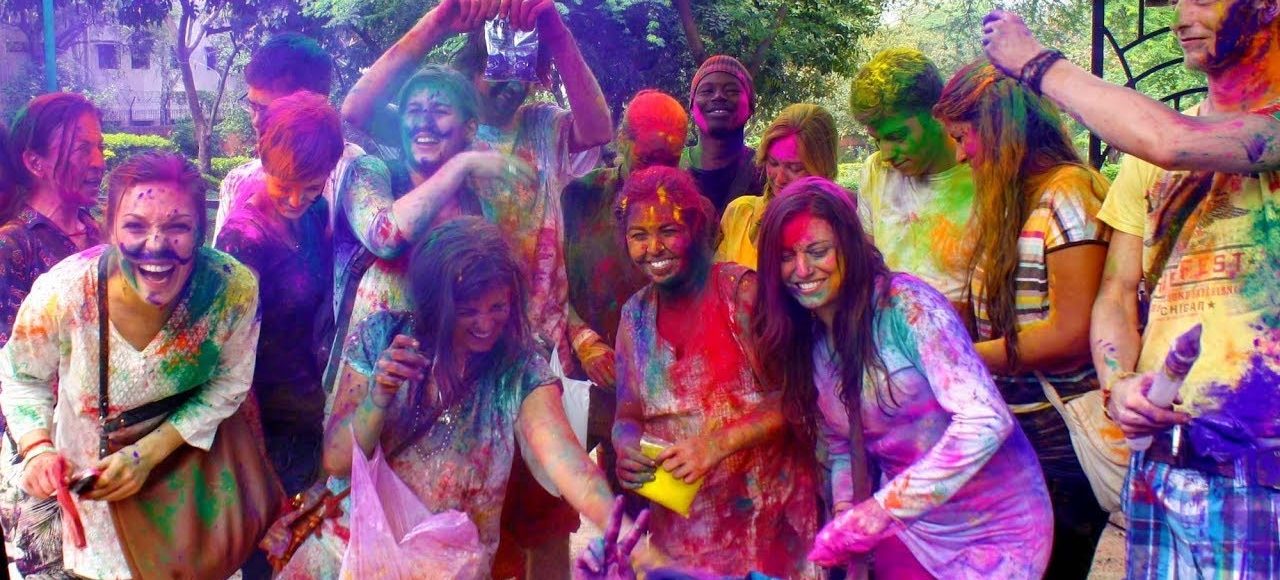
Holi in Nepal- Festival of colors
Along with the title 'Land of Temples', some people call Nepal also as the 'Land of festivals'. Nepal has festivals the almost full year in one or other communities. Among all those festivals, holi is one of the most popular & celebrated festivals in Nepal which is also known as the festival of colors. This festival is farewell of winter & welcoming of summer. Holi is also known as 'Fagu Purnima' because it is celebrated in full moon day of falgun. This festival is celebrated by millions of people from Nepal, India & other various countries. Traditionally holi is a religious Hindu festival which signifies the good over evil. In case of Nepal, Holi is an official holiday. Holi is probably one of the most colorful & lively festivals celebrated by Nepalese people. According to some legends, it is believed that holi is the day when Holika died. It is the celebration of her death. The origin of Holi Festival can be traced back to the 'Mahabharata'. Prince Praladh was a son of King Hiranyakasyapu, a demon who was so arrogant that he started thinking that he was the only Lord in this Universe. He didn't allow anyone to worship Lord Vishnu. Praladh became a passionate devotee of Lord Vishnu & clearly opposed his father. Hiranyakashyapu wanted to convince his son with various tries, but he failed as Praladh never stopped worshipping Lord Vishnu. This angered Hiranyakashipu & Since then, the king ordered his sister Holika to burn the prince on the full moon night. Under the blessing of God Vishnu, Prahlad was untouched while Holika was burned into ashes. When the prince walked out of the fire, people sprinkled him with colorful water to express the praise of goodness and hatred of evil. Holi in Nepal starts one week before the main day of Holi. Holi Festival in Nepal has a special ceremony. There is a tradition of erecting a long bamboo stick (lingo) covered with pieces of different colored clothes (Chir) in Basantapur Durbar Square, Kathmandu. On this day, Nepali women dress in beautiful Sari and then circle around the pole to pray for the blessings. On the eve of Holi, the lingo is taken down and the Chir is burnt. The event is called Chir Haran or Holika Dahan. Holi then starts. On the eighth day, the festival comes to an end with Holi bonfire. In ancient time, People used to make Pichkari (water guns) out of bamboo. And throw colored water on each other. Nowadays balloons and plastic water guns (pichkari) are used. The balloon filled with water is called Lola in Nepali. Kids start throwing lolas on each other from the week ahead of main Holiday. On the main day of Holi, People go to relatives & friends house in a group, put color at each other & celebrates Holi. As the day comes at the end, People collects wood, burn fires and play music and performs dances. Some drink bhang and go crazy. The burning of the wood log in village and town street is an important part of Holi celebration. Even though Holi is a traditional Hindu festival but on the day of Holi, you can see Hindu, Buddhist, Muslim & Christian, people from all religions throwing color at each other & celebrating Holi. So, Holi is truly a colorful festival of happiness & joy that brings the family closer. It definitely falls under some of that festival that you shouldn't miss if you're in Nepal during the time of celebration.

Rastriya Prajatantra Diwas – Nepal to celebrate its 68th Democracy day
Rastriya Prajatantra Diwas or National Democracy day in Nepal is celebrated on every Falgun 7th. Nepalese were released from the clutches of 104 years long Rana autocracy on February 19, 1951. To commemorate the day of independence Nepal celebrates every Falgun 7th as Rastriya Prajatantra Diwas. There is a public holiday in Nepal every year on this day. It is of great importance in Nepal's history since it was the day when Nepalese citizens were free from long-reigning Rana regime. A new King named Tribhuvan Shah led the movement to defeat the Ranas. Before the Ranas came to the throne, Nepal really was medley of divided mini-states rather than a unified nation. An official central government existed, but power was not much centralized. It was this division that allowed Ranas to take over the government more easily. The people of Nepal experienced a life full of torment & nightmares while under the ruling power of Ranas. There were even mass killings & other intolerable abuses of power during the reign of one of the Rana monarchs. The Ranas had taken away a lot of opportunities from the people while the members of the family were enjoying profligacy & lavishness that they had the highest office. Peculiarity such as corruption, discrimination & violent behaviors has ruled the country during this period in Nepali history. This period is now looked back by most of the Nepalese as very dark time indeed. Finally, in 1951, a popular rebellion succeeded in overthrowing the powerful Rana regime once & for all. There were martyrs who died in the conflict & are honored in democracy day as national heroes. The power of people continued to become stronger & entire after the struggle of 104- long years. All the citizens of a nation have been enjoying their freedom & rights since then. This special day is observed throughout the nation with a number of special programs. Each year a special program with the military parade is shown by Nepal army at Tundikhel. A number of grandee like a president, the prime minister, speaker of the house attend the program. People also celebrate this day offering prayers to give respect & honor to the heroes of democracy. Most governmental organizations & independent groups hold several program & rallies all over the country on this day. Democracy day is the day to remember the past heroes & be thankful for democratic government. On this special day, let all of us call for unity, harmony, solidarity & co-working among the political parties & citizens of the nation.
Tags: 68th Democracy day, Democracy day, Nepal, Nepalese citizens, Rana Dinesty, Rastriya Prajatantra Diwas
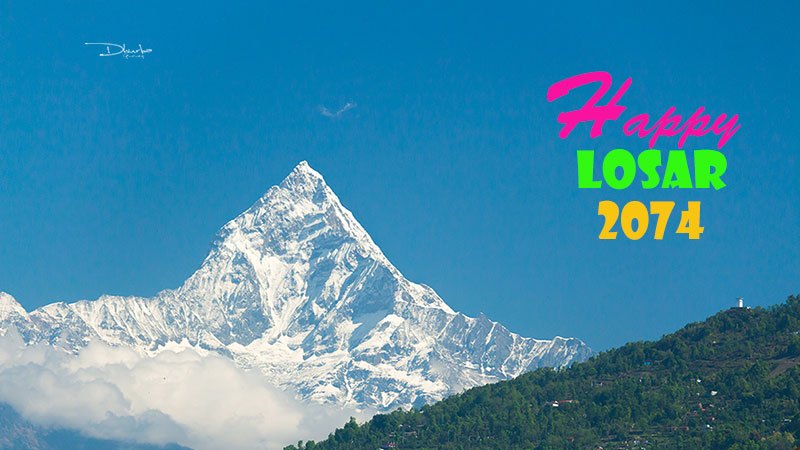
Gyalpo Losar – Main Festival of Sherpa People
Nepal is a multi-cultural, multi-ethnic, multi-linguistic country squeezed between two Asian countries India & China. There are people of 125 different caste/ethnic group living in the country. Nepal, where you can find countless gods, goddesses & temples is also known as a land of festivals. A tourist finds popular festival each month while visiting Nepal. There are 3 kinds of losar celebrated by people here. They are Tamu Losar, Sonam Losar & Gyalpo losar. Losar is the festival that displays the tradition, culture & values of Buddhist & Tibetan community to the world. Gyalpo losar is the celebration of Tibetan New Year. The date of Gyalpo Losar falls in February each Year. In February people of Nepal, Tibet & other neighboring Asian countries begin preparations to celebrate the start of the New Year. The term Losar is derived from two words Lo, meaning year and Sar, meaning new. In Nepal, Losar is celebrated mostly by the Sherpa, Tibetan, Tamang, Bhutia & Yolmo people. The way of celebrating Losar varies according to different communities & different places. Today's Losar celebration last almost two weeks. The main celebration takes place during first three days. On the first-day beverage called "changkol" is made from "Chaang" (a Tibetan version of beer). The second day is the main new year day called Gyalpo Losar and on the third-day people get together & have feasts. Families prepare for Losar some days in advance by cleaning their homes; especially kitchen, decorating with fragrant flowers. Quarrels are resolved, new clothes are obtained, special foods such as Kapse (fried twists) are made. One of the most special dishes is soup called Gutung. The soup is prepared with a combination of nine different beans. Gutung is also served with dumplings, which contain different hidden items used in the place of filling. The hidden items are often strange, such as wood, coal or salt & are jokingly meant to relate to the character of the person they are chosen for. In the afternoon of the main day, people get together at stupa & monasteries wearing their traditional dress to continue the celebration. A traditional dance representing the battle between deer & king is performed. Mantras are chanted & fire torches are passed among all the people in the crowd. They donate gifts to the monks & mark the beginning of new year genially. Even though nowadays, due to western influence we are losing our traditional values, culture & rituals. But still, there are some youngsters who are putting their efforts to protect & preserve the culture. If you are in Nepal during the festival, you must surely observe the festival by visiting Boudhanath area, Swoyambhunath temple & other various monasteries situated in the country to know more closely about the culture of the local native people.
Tags: Bouddhanath, Festival of Sherpa People, Gyalpo Losar, Nepal, Sherpa, Swoyambhunath temple, Tibetan New Year
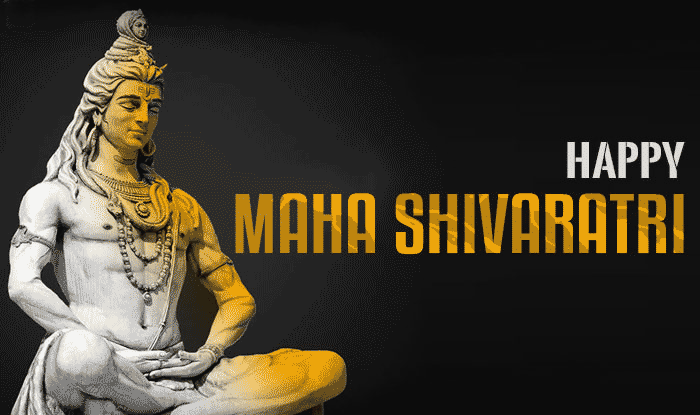
Maha Shivaratri Festival Marriage of Shiva and Parvati
Maha Shivaratri is the festival celebrated during the Hindu lunar month of Phalguna annually in honor of god Shiva. It is celebrated in every luni-solar month of Hindu calendar in late winter and before the arrival of spring once a year that marks Maha Shivaratri which means "the great night of Shiva". Generally, it falls on the month of February. The word Shivaratri is composed of two Nepali words 'Shiva' & 'Ratri', Shiva is the name of Hindu god & Ratri means night. Maha Shivaratri is considered as one of the most important festivals in Hinduism. It is observed by Hindus in India, Nepal, Mauritius & other various countries. The festival holds a lot of significance in Hindu mythology & it is believed that those who observe the day with devotion & sincerity are forgiven of all their sins. There are many stories behind the celebration of Maha Shivaratri. According to one of the most popular legends, Shivaratri marks the wedding day of Lord Shiva & Parvati. Some people believe that on the night of Maha Shivaratri lord Shiva performed the "Tandava" the vigorous dance that is a source of creation, preservation & destruction. It is also believed that Lord Shiva protected the world from dangerous poison; therefore, to thank Lord Shiva for protecting the world people started celebrating the day as Maha Shivaratri. As the major festival in Hinduism, Maha Shivaratri marks a remembrance of "overcoming darkness & ignorance" in life and the world. It is celebrated by Hindus all around the world by chanting prayers, fasting, doing yoga & mediating on ethics such as self-restraint, honesty, forgiveness & discovery of Lord Shiva. The celebration includes maintaining a "jagaran", an all-night vigil & prayers. In the context of Nepal, Maha Shivaratri is a national holiday & celebrated widely in temples all over the country, but especially in the Pashupatinath temple which is considered the protector of Kathmandu valley & Nepal. Thousands of devotes & sadhu from India & Nepal visit the temple on the day of festival & set the tent on the temple premises. On Maha Shivaratri, married woman pray for the well-being of their husband while unmarried woman prays for a husband like the Lord Shiva. In the afternoon, an official programme is organized by Nepalese Army in Tundikhel to celebrate the festival. Unlike most Hindu festival which takes place during the day, Maha Shivaratri is especially celebrated at night. There are all-night prayers representing Lord Shiva's ability to overcome darkness & ignorance. Many people spend the night around the temple, lighting sacred fires & singing praises to Lord Shiva. Mostly it rains on the day of Shivaratri in Nepal. It can be a mere coincidence or power of Lord Shiva.
Tags: God Shiva, Hindu, LordShiva, Nepal, Pashupatinath, Shiva Ratri







